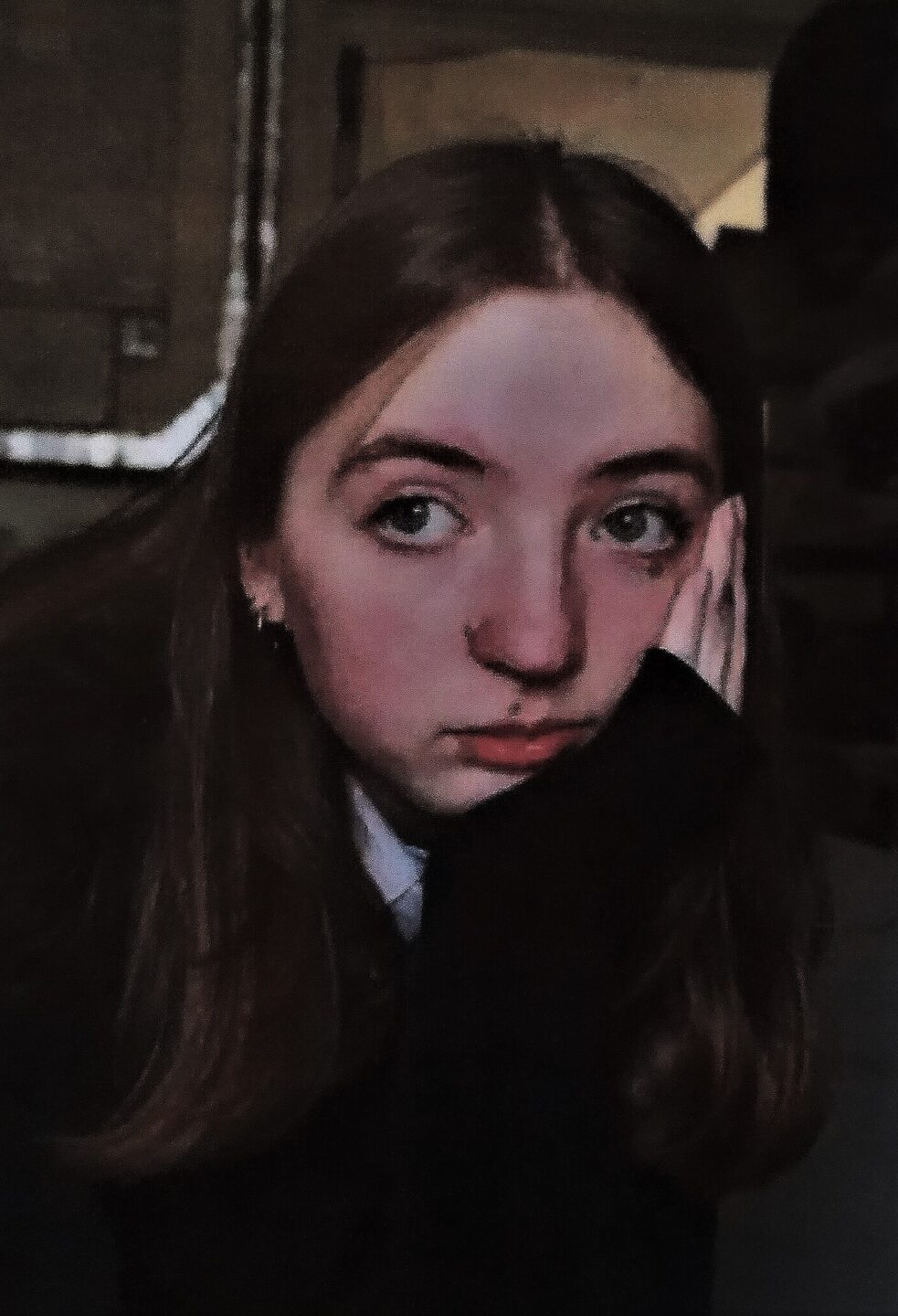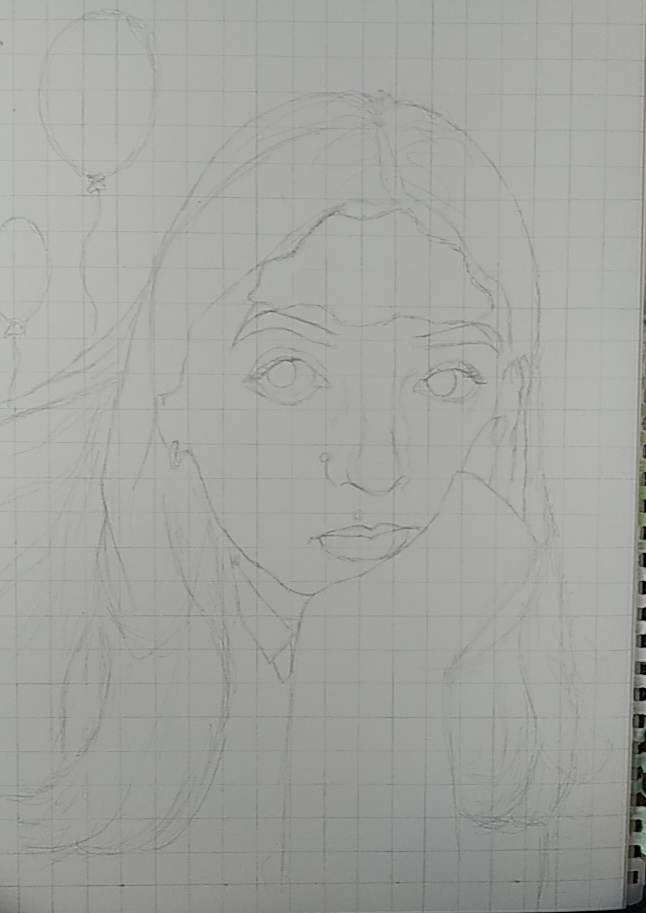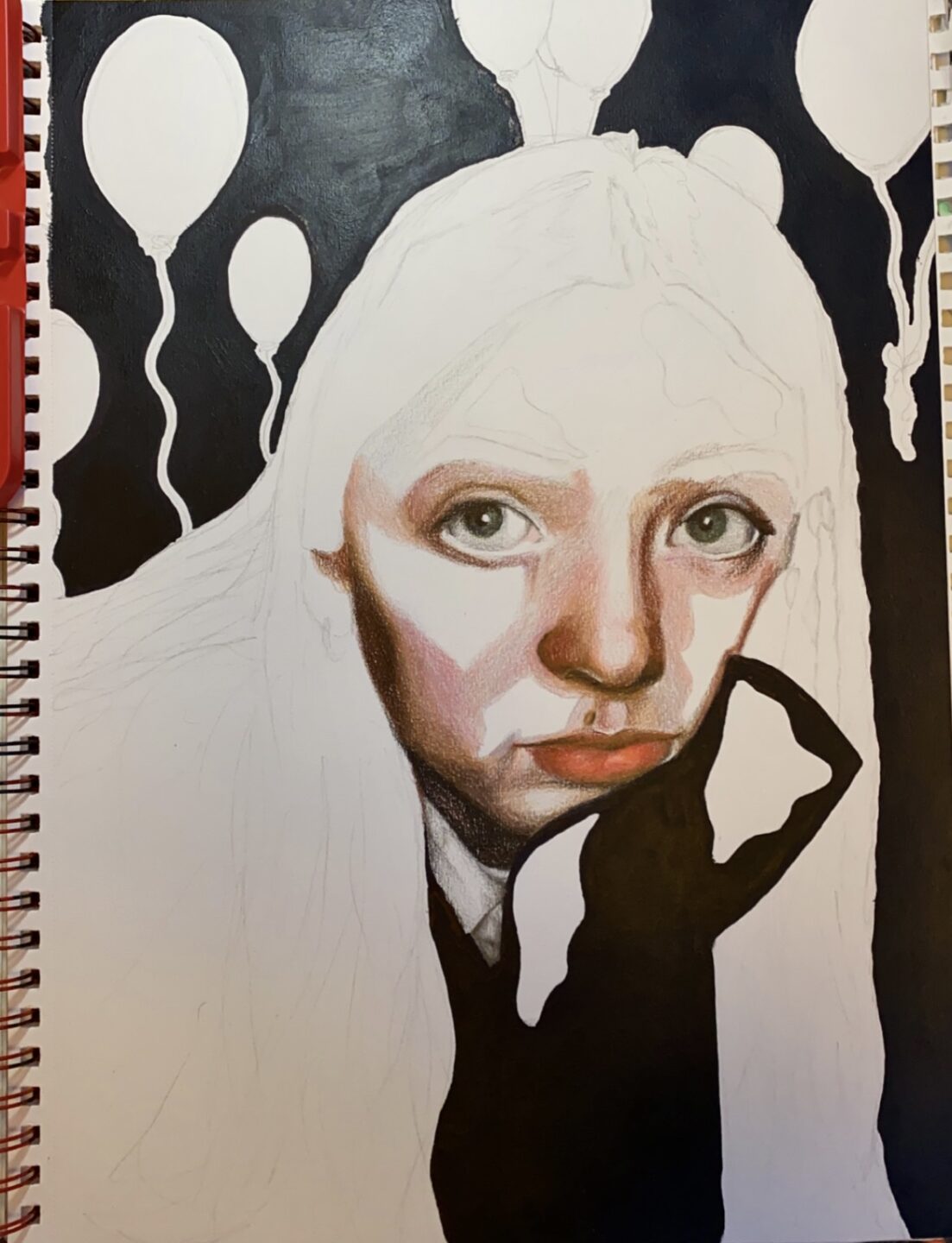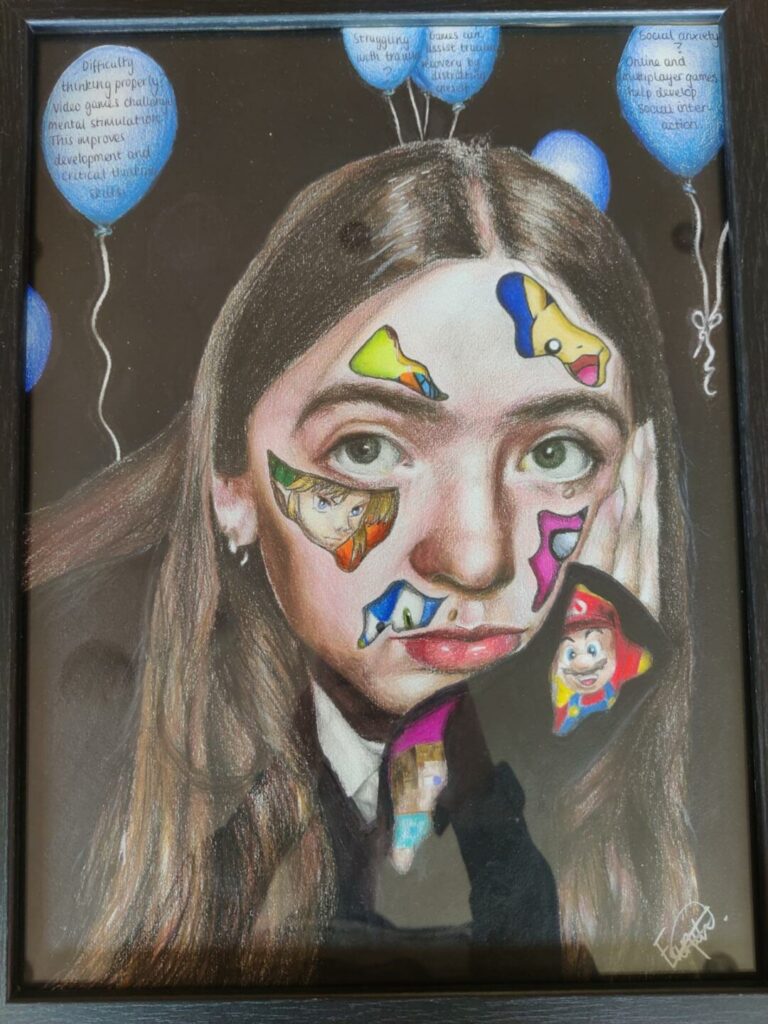14-year-old Farah depicts the blur between reality and fiction in gaming, and the impact that has on mental health.
This article is part of the Never Give In campaign, where 21 young Cardiffians were commissioned to create a piece of art showing how gaming affects their mental health. This is the story of Farah, a 14-year-old artist who was part of the project.
How has gaming affected your mental health?
Although I play games less often than I used to, it is still something that I enjoy doing when I get the opportunity. It is a means of escape from the real world and lets you “live” somewhere where you have unlimited freedom to do what you want.
Games such as Minecraft assist in relaxation and always help me to get my mind off things. Over the last few years, I have struggled a lot with my mental well-being and art/drawing was the best way for me to let loose and use my creativity. Games that had a similar effect were an easy alternative for me.
From board games to socially gaming online, its impacts benefit so many and are a coping mechanism for people ranging in ages. Sometimes it brings you closer to people (much like me and my brothers) and sometimes it’s great for when I want to be alone – which is a lot of the time.
Often when I feel anxious, stressed, or upset, certain games are therapeutic and help decrease stress levels (depending on the types of games of course). Nonetheless, these opinions are personal and can vary from one person to another. It is important to manage the way in which games are being used so as not to cause issues, whether that’s mentally, socially, or anything between.



What inspired you to create this artwork?
My work takes inspiration from the idea of freeing oneself. The concept of reality is intricate and endless, meaning there’s so much to create with it. My idea was to portray the line between reality and fiction and that sense of separation.
The art reflects an escape from real life into a brighter, freedom-filled atmosphere. It represents letting go of negativity and although it doesn’t erase it, it creates a distraction in which one can feel unconstrained. It illustrates the drastic range of emotions a single person can feel simply by gaming and what sort of impact it has.
I used duller colours on the portrait itself to embody the bleakness and grief that they may feel, and much more vibrant colours in the image behind/within the face in order to depict the joy and amusement produced whilst gaming. The main message behind my work is that gaming can be seen to many as a gateway rather than a barrier.

What message would you give to someone who is struggling with their mental health?
The famous quote “it gets worse before it gets better” is, unfortunately, in many cases a true one – though not all. But people struggle to know how, exactly, it gets better.
I oftentimes find everything overwhelming and have had a difficult time at home, in school, and elsewhere. My best advice is to find what works for you. People will always tell you how you should and shouldn’t cope with your issues and it can be very stressful and difficult, so it is ultimately down to you to find what gives you your motivation. It doesn’t necessarily have to be active or productive, so long as it is something you enjoy.
Take care of yourself. Know that it is not selfish to put yourself before others when you are struggling. After all, how are you meant to help someone else when you are still trying to help yourself? Overall, put yourself first. Focus on yourself and it may lead to a better tomorrow.
Related Infromation
To find out more about the Never Give In campaign and see the incredible artwork from all of the other artists, click HERE.
Struggling with your mental health? Check out TheSprout’s Mental Health Information Page where you can find loads of local and national support services.
If you’re sharing our posts from the Never Give In campaign on social media, remember to use the #PositiveMentalGaming hashtag. Feel free to tag us so we can see what you’re sharing!





